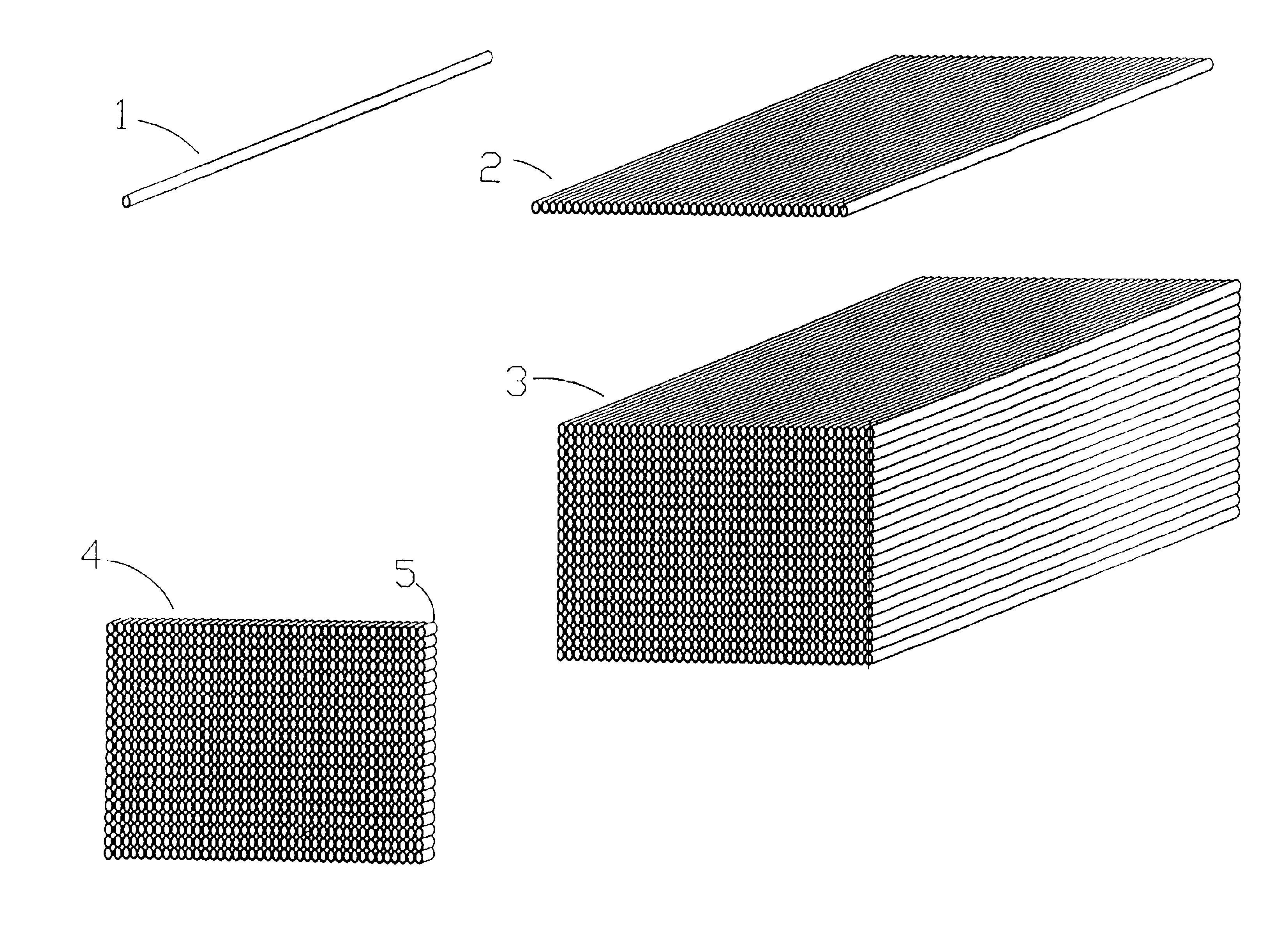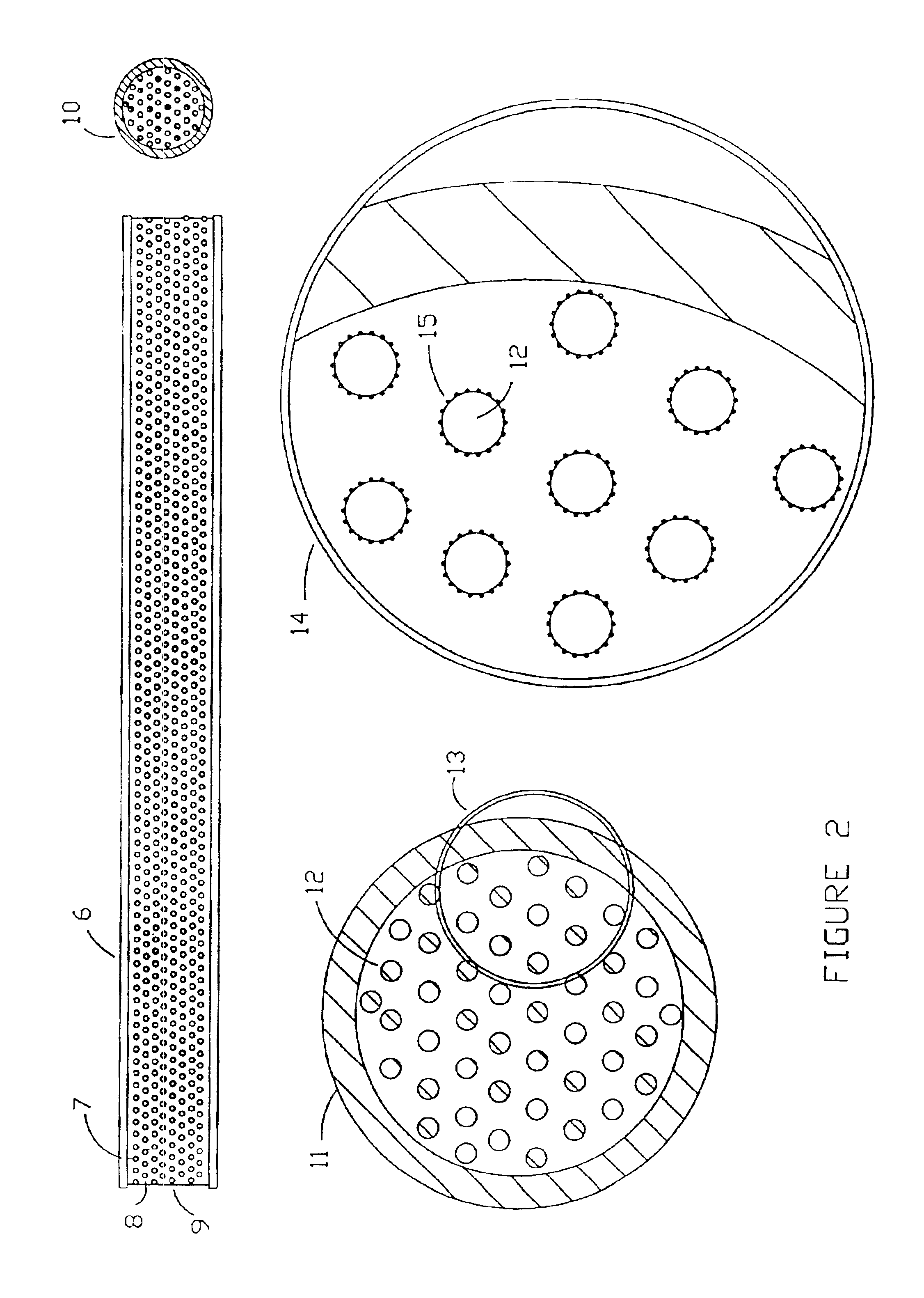Microarrays and their manufacture
a microarray and micro-array technology, applied in the field of microarrays, can solve the problems of high cost of currently produced biochips or microarrays, and the application of this technology to routine clinical use, and achieve the effect of being inexpensive and sufficiently standardized
- Summary
- Abstract
- Description
- Claims
- Application Information
AI Technical Summary
Benefits of technology
Problems solved by technology
Method used
Image
Examples
example 1
Formation and Analysis of a Microarray
[0180]Antibodies were prepared by affinity purification by reversible binding to the respective immobilized antigens and subsequently immobilized on particulate supports (Poros G, made by PE Biosystems). An Integral 100Q biochromatography workstation.
[0181]Each antibody support was made by trapping the antibody on a column of Poros G (commercially available Poros particles pre-coated with protein G, a bacterial protein capable of binding many immunoglobulins by their Fc domain) and subsequently cross-linking the antibody and the protein G with dimethylpimelimidate (following the PE Biosystems protocol) to covalently immobilize the antibody on the Poros particles. Such antibody columns can be reused (with an acid elution of bound antigen) more than 100 times in a subtractive mode, and are therefore extremely stable. Each antibody support was characterized to demonstrate specificity for a single antigen.
[0182]Antibodies directed against human seru...
example 2
Manufacture and Use of Diagnostic Array Detecting Autoantibodies to Mitochondrial or Lysosomal Proteins
[0193]Suspensions of whole isolated rat and mouse liver mitochondria, lysosomes, and expressed proteins are suspended or dissolved in an aqueous buffer, at 10 mg / ml concentration, and optionally fixed with glutaraldehyde (1%). 1 ml of each preparation is mixed according to the kit instructions with 20 ml of JB-4 (Polysciences) catalyzed infiltration resin prepared by mixing 20 ml of monomer A containing 0.17 g of catalyst. After complete mixing, 40 mL of monomer B containing 0.17 g catalyst is added with stirring. When completely dissolved, 0.8 g of Accelerator is added, the mixture placed in a syringe and injected into 0.0625 inch internal diameter Teflon tubing under anaerobic conditions. Polymerization occurs at room temperature in approximately 50 minutes. The ends of the tubes are then heat sealed and stored cold until used, or are immediately extruded for use in preparing a f...
example 3
Manufacture and Use of a Diagnostic Array Using Histological Embedding Support
[0195]Arrays are prepared which incorporate fixed infectious particles to be used to detect convalescent antibodies appearing late in the history of an infection. These are important in following sentinel populations to determine what infectious are occurring.
[0196]Immuno-Bed GMA water-miscible embedding medium is made up as directed (Polysciences Inc.), and small batches are mixed with different suspensions of fixed selected viruses (average titer 109 / ml) or fixed bacterial cells (average 107 particles / ml). The suspension is placed in a syringe and forced under pressure into Teflon® tubing of {fraction (1 / 16)}-inch internal diameter, and allowed to polymerize at room temperature. The tubing is pre-treated with metallic sodium in an organic medium to provide a surface, which will adhere to epoxy resins. The polymerized fiber is stored in the coiled Teflon® tubing in the cold.
[0197]The arrays are assembled...
PUM
| Property | Measurement | Unit |
|---|---|---|
| thick | aaaaa | aaaaa |
| thick | aaaaa | aaaaa |
| length | aaaaa | aaaaa |
Abstract
Description
Claims
Application Information
 Login to View More
Login to View More - R&D
- Intellectual Property
- Life Sciences
- Materials
- Tech Scout
- Unparalleled Data Quality
- Higher Quality Content
- 60% Fewer Hallucinations
Browse by: Latest US Patents, China's latest patents, Technical Efficacy Thesaurus, Application Domain, Technology Topic, Popular Technical Reports.
© 2025 PatSnap. All rights reserved.Legal|Privacy policy|Modern Slavery Act Transparency Statement|Sitemap|About US| Contact US: help@patsnap.com



